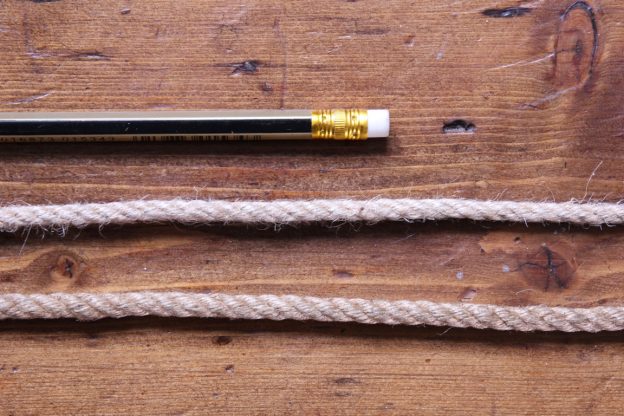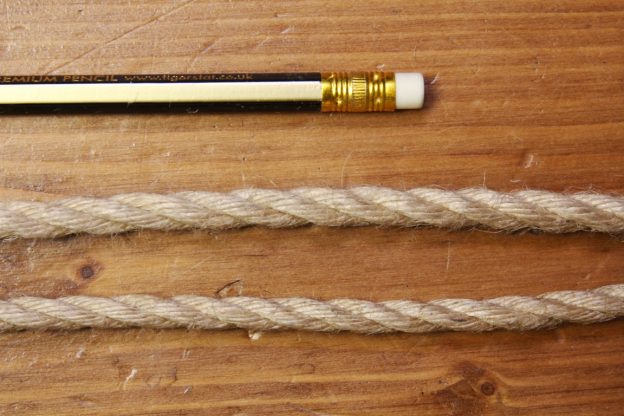I have noticed some surprising things about rope diameters and treatment while I have been taking detailed photos for products on ESINEM-Rope over the past couple of days to improve the listings. One thing that I wanted to do was to create close-ups of the various ropes to show them clearly and also to allow you to gauge size against a familiar object, in this case an ordinary pencil. I’ll be adding exact sizes of the rope straight off the reel based on taking an average of 10 wraps around a cylinder as this seems the best way to get a representative figure.
As we know, treatment alters the diameter but now we get to the interesting bit: Depending on whether treatment is wet or dry will affect the final diameter significantly as will the type of rope. I bet a lot of people don’t consider 4mm Xtra reinforced, for example, because they think it will be too thin. In its untreated state, it looks thin (thinner rope below). However, once wet treated it expands to a more generally useful 5mm as you can see below (bottom of photo):

On the other hand, when Osaka 6mm is dry treated, you can see the rope shrinks from the heat. In both cases, the difference in diameter is at least 1mm so enough to make a noticeable difference.

As I have always said, rope diameter measurement is more an art than a science since so many factors influence diameter. I’m guessing moisture content must be a factor since dry treatment seems to shrink the diameter. As for wet treatment, the results can be even more variable. Some factors that might come into play are:
- Amount of tension when drying. The more you apply, the more it will stretch and reduce in diameter.
- Amount of agitation. I suspect that more aggressive treatments like washing machines tend to relax the rope and open the plies increasing diameter.
- Temperature and duration of washing are likely to have an effect.
- Additives such as conditioner are likely to relax the rope and open the plies increasing diameter.
How rigorous you make the wet stage will depend upon the construction of the rope. Tightly twisted double yarn ropes can take more aggressive treatment that would kill a loose laid single yarn rope. The worst thing you can do is to tumble dry it with conditioner as it will only be fit for the bin 🙁 In general, I don’t wet treat single yarn loose laid ropes but, if I do, I am very gentle with them and usually try to tighten the twist when I hang them out to dry.
Anyway, I hope the comparative photos with the pencil help but if anyone has any better ideas, please let me know.
